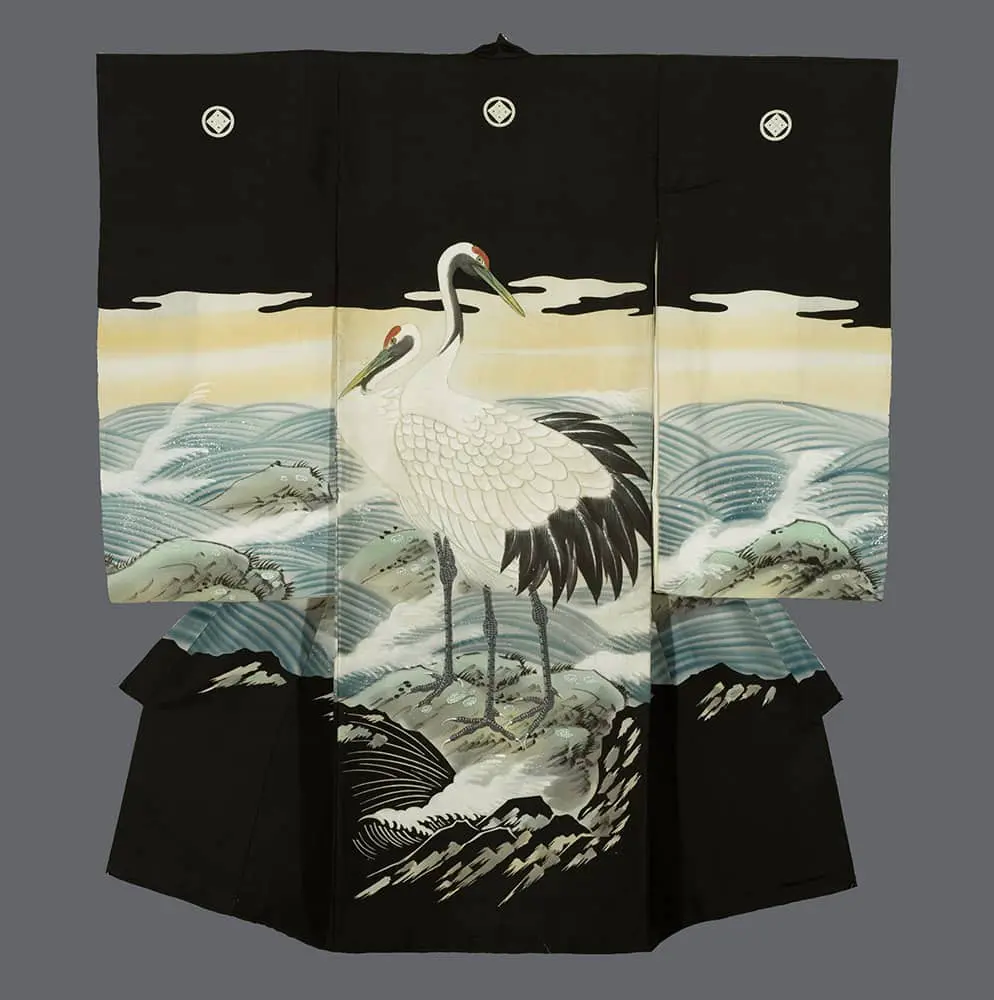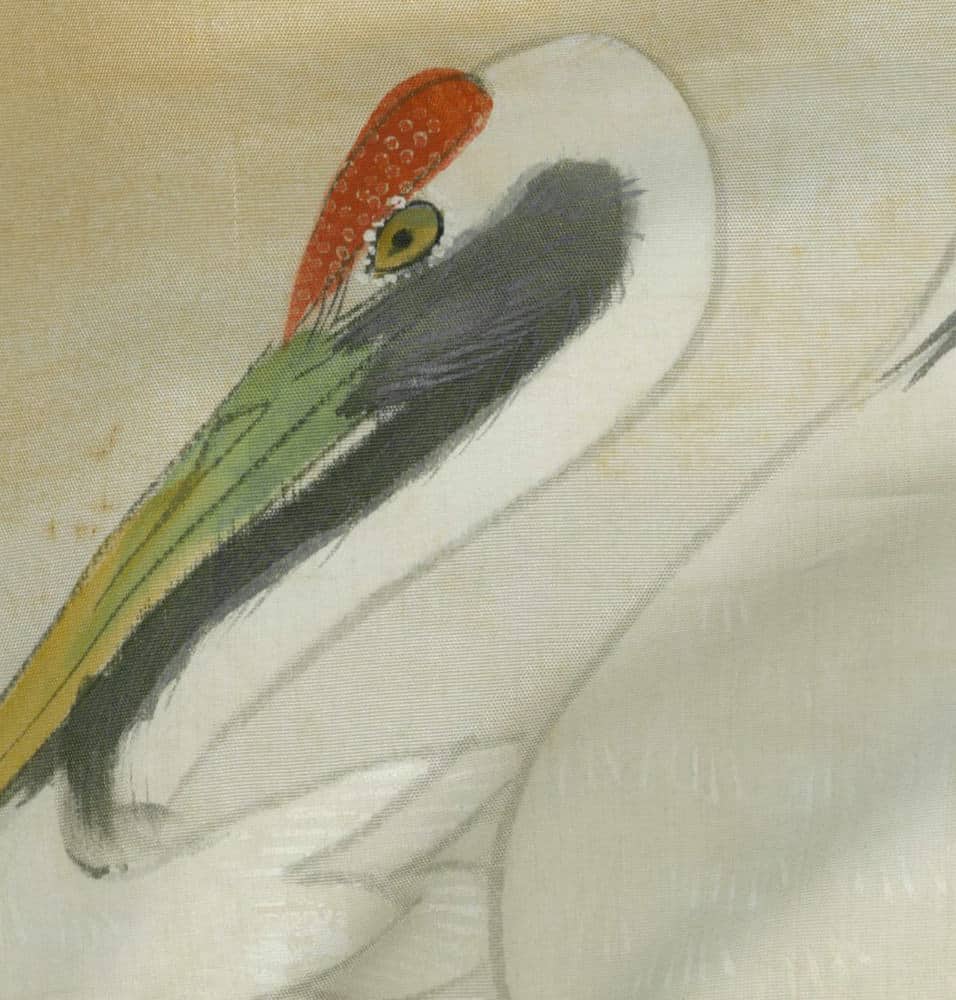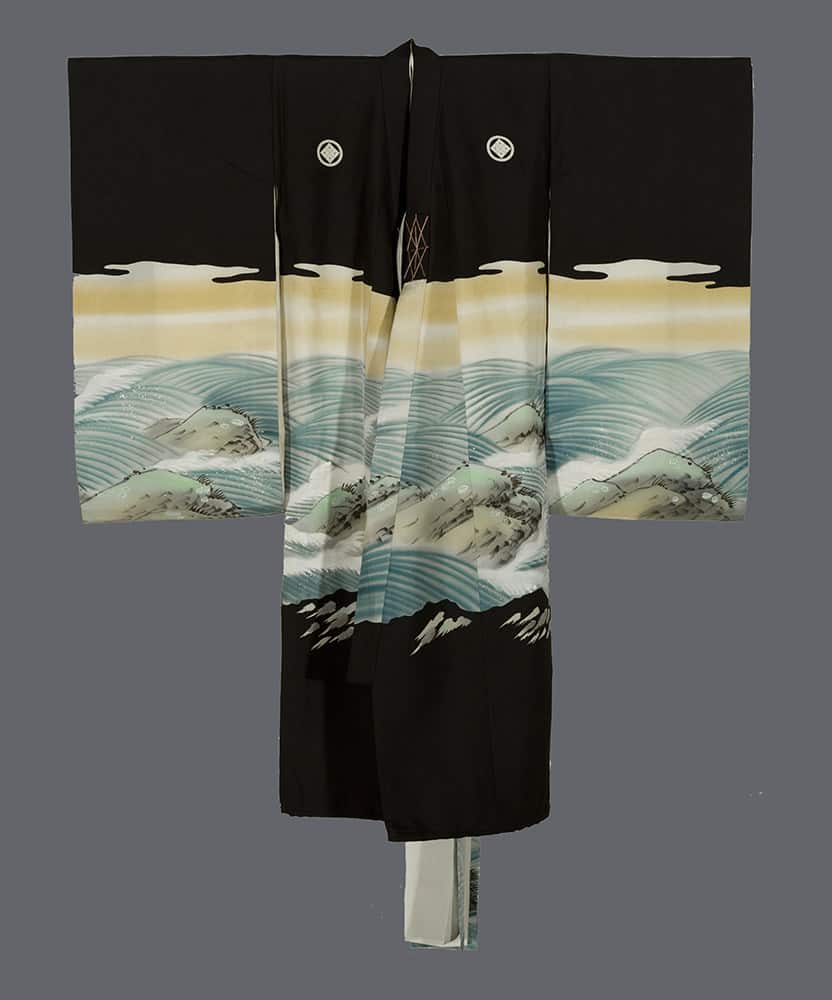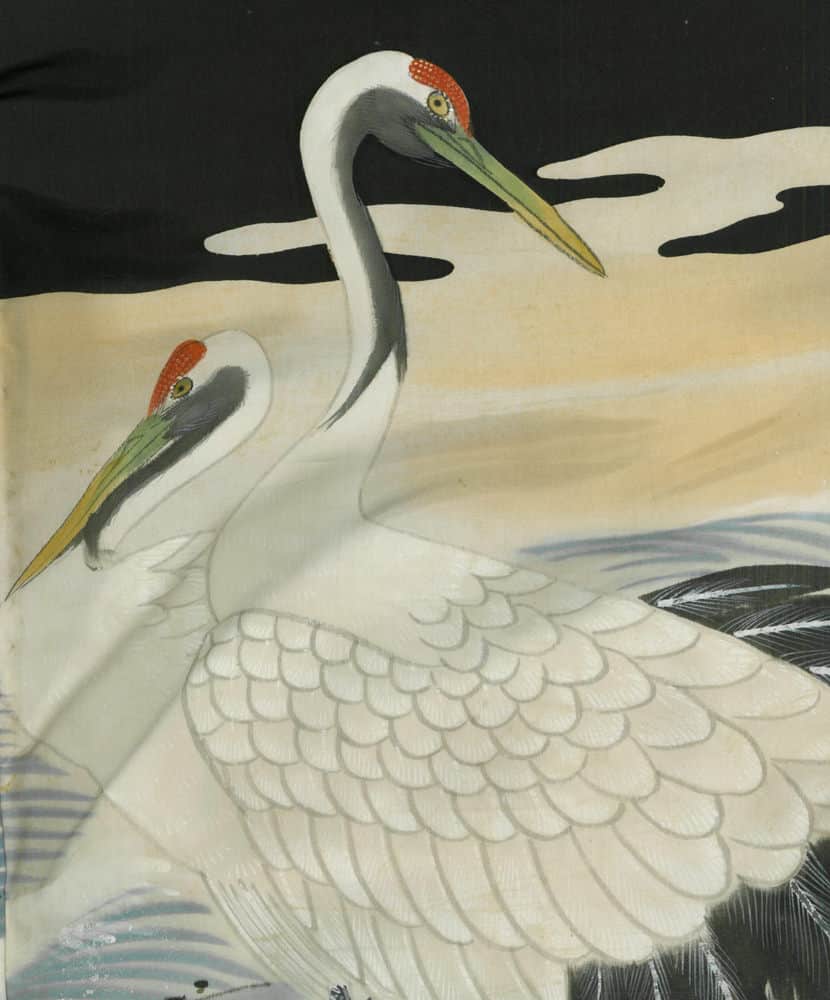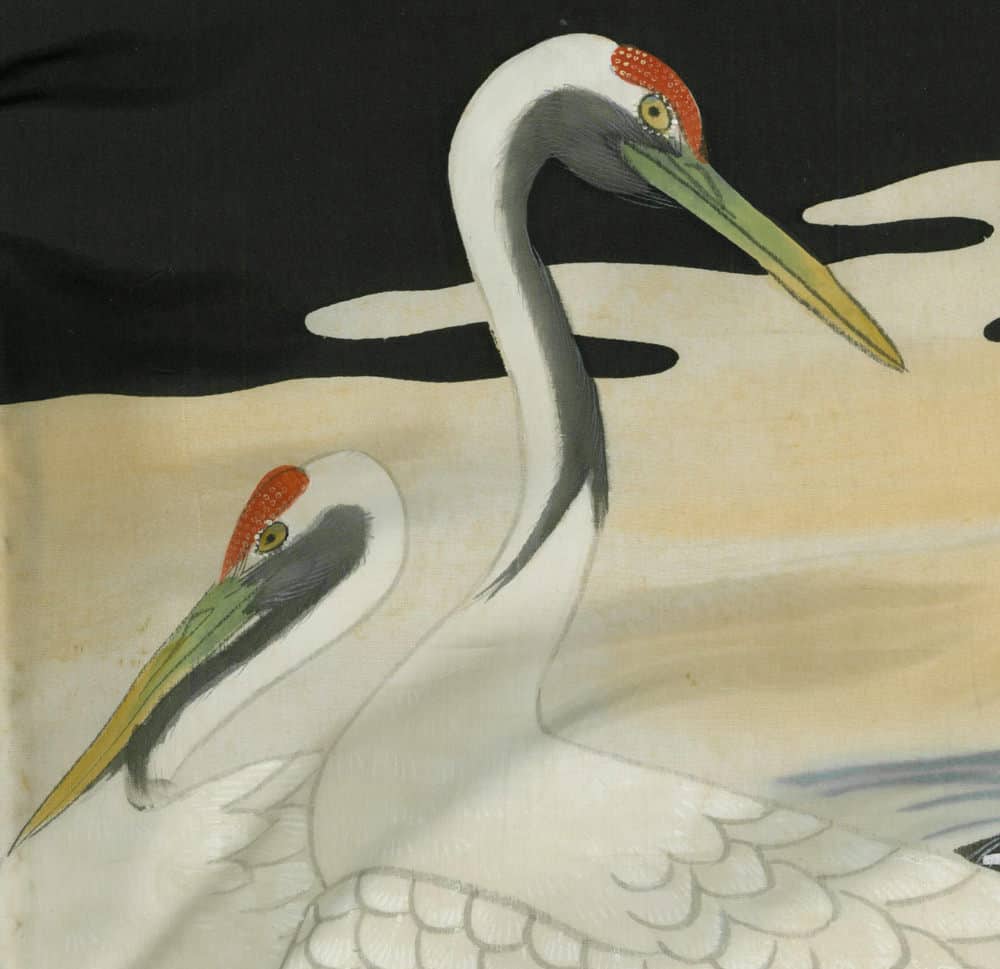This boys' miyamairi kimono features a painted composition centered on a pair of large white cranes (tsuru) with distinctive black wing markings and a red crown, positioned against a dynamic seascape of stylized waves rendered in soft blue-green tones. The cranes stand majestically among rocky outcroppings.
The black upper portion of the kimono creates a dramatic contrast with the naturalistic water and landscape elements below, while the three white circular mon (family crests) provide geometric punctuation points that echo the overall balance between traditional and modernist aesthetics.
Symbolically, the crane motif is deeply auspicious in Japanese culture, representing longevity, good fortune, and spiritual protection—particularly appropriate for a ceremonial garment intended for a young boy's Shinto blessing. The combination of water, rocks, and cranes evokes the classical theme of "tsuru to nami" (cranes and waves), symbolizing the harmonious relationship between heaven and earth, and the wish for the child to navigate life's challenges with grace and resilience. The flowing water patterns suggest the continuous flow of blessings and prosperity, while the solid rocks represent stability and endurance, creating a sophisticated visual metaphor for the hopes and prayers accompanying this sacred ceremony.
Measuring 33 inches (84 cm) from sleeve-end to sleeve-end, it stands at 38 inches (97 cm) in height.
.avif)

